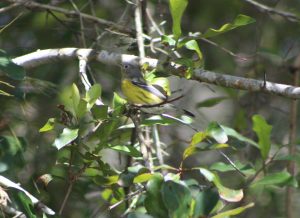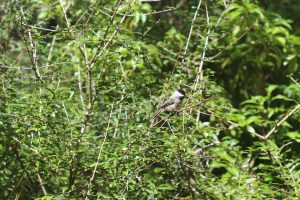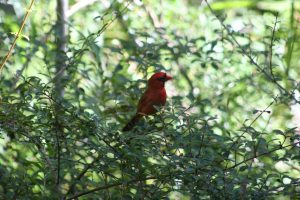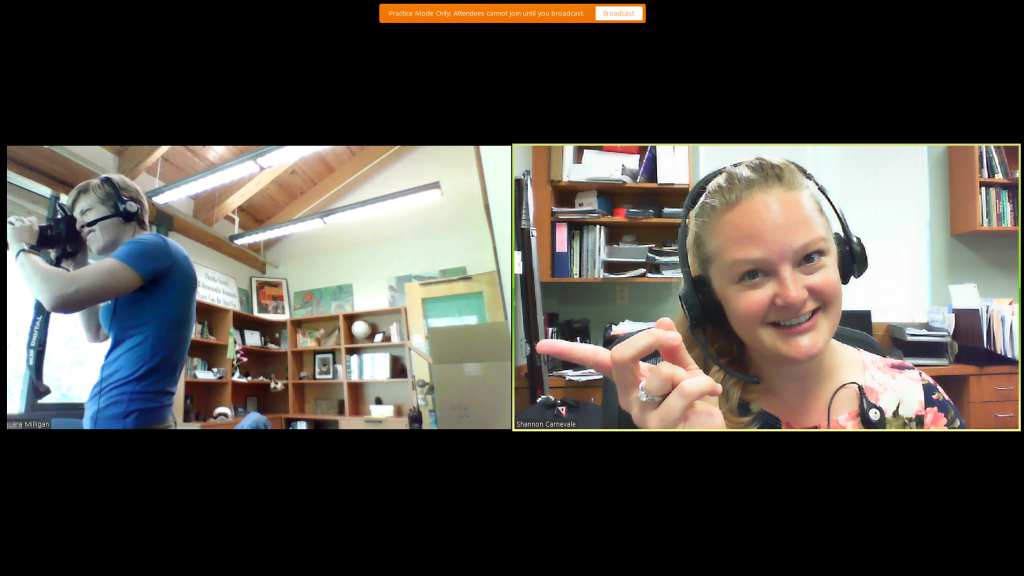
“So, there I was minding my own business…”
When these words came out of my teacher’s mouth, we all dropped our pens and tuned in; it was story time! Mr. Weinrich was not only one of the most inspiring, funny, and captivating teachers I ever had, he was also a total bird nerd. As a high school student, albeit, in the Jupiter Environmental Research and Field Studies Academy (JERFSA), I did not think birding was cool. I didn’t get the attraction or the draw. But, as any incredible teacher can do, with time, Mr. Weinrich inspired me to become a bird nerd too. And, I’m here to say it is cool! While I’m no Mr. Weinrich, I’m hoping to inspire you today to start your journey to the amazing world of birds. To do this, I’m going to answer who, what, where, when why and how…
Who?
You! Need I say more?
What?
Hundreds of different species of birds! Now, don’t let this number overwhelm you. My hope is to excite you about all that you can see! From large to small, there are birds of all shapes and sizes you can observe. To give you an idea, I pulled some community science data. In Pinellas County in 2023, there were 127 different species documented on iNaturalist. If you look at data from 2015-2023 from eBird there have been 416 species sighted in Pinellas County. Wow!
Here are some photos I’ve taken right from my office! I know, I’m not the best photographer 😉



Where?

Anywhere. Literally, anywhere. This is one of the main draws of birding as a hobby. It’s one of few hobbies you can do anywhere, any time of year. And, bonus, you don’t even have to get in your car and drive. You can do it from the comfort of your home.
When?
This is a great question. I would say this depends on your goals, but for a beginning birder, any day of the year is a great day to start! And, Pinellas County is blessed with migrants in the fall and spring too! Just when you think you’ve got your resident birds down, a flash of yellow passes by your window and it’s a bird you’ve never seen before…a migrant!
Why?
This one may take some time, but once you learn to identify one bird by its call or characteristics, it’s very likely you will get excited and want to learn more! One becomes two, two becomes four, and the learning never stops. It’s a way to enjoy nature, build a connection with your local environment, and who knows, maybe seek out new opportunities to go birding in places you’ve never been.
Did you know there is something called the Great Florida Birding and Wildlife Trail? Ever seen this sign? That means there’s a great birding trail just waiting for you to explore. We have 15 sites just in Pinellas County! We may be the most densely populated county in the state, but we still have some amazing wildlife wonders to see.
How?

This one is easy. Use your eyes to observe or your ears to listen. If you see a bird, take note of its size, color(s), any distinct markings, time of year you’re seeing the bird, and where (habitat) you’re seeing the bird. Sometimes, you never see the bird, but you hear its song or call. It’s super fun to learn bird calls and know what is nearby just by learning which species make which sounds. For example, just the other day, I was on a walk and I heard a barred owl calling. I knew it was close by how loud the sound was. I followed the call based on the direction it was coming from and where I know they like to perch (up in the trees)…and low and behold, I looked up, saw a large, dark shape on a branch, and there it was!
There are endless resources to help you start identifying birds once you gather some information. You can download a smartphone app and/or pick-up some field guides to get started. I am always here as a resource too if you’re able to snap a picture or record some audio, I would love to try to help you identify birds you’re observing! My email is lara317@ufl.edu.
Perhaps the best news is this is a hobby you can do 100% for free! At least to start 😉 It’s kind of like those “free trials” you see for various products and services…it’s free to start and then once you’re hooked, it’s time to pay. In this case, your main cost is just a pair of binoculars. Here are a couple resources to learn about binoculars if you want to take the next step. I highly recommend binoculars if you’re going to get into identifying our smaller songbirds. For me, I always have binoculars within reach because you never know when you will see something cool!
Happy Birding!
 6
6

